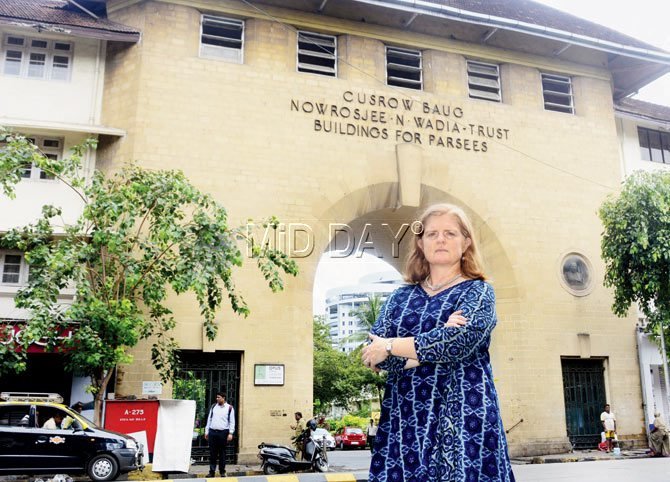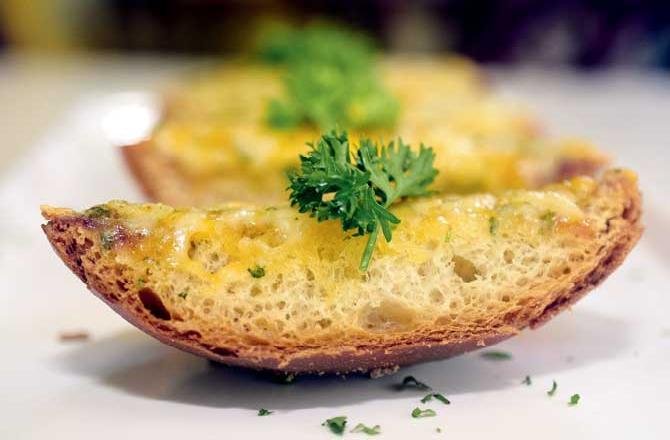The past is a strange country: The paintings of Katayun Saklat
Stained glass designer Katayun Saklat’s paintings, with their disconcerting details, give a dark twist to sweet nostalgia
At first glance, Katayun Saklat is just another kindly, elderly lady with a thatch of grey hair. But she is much more than that. She is one of the most accomplished designers of stained glass in India, with her work included in several public and private collections. She is also a painter, working chiefly with oil and watercolour. At 83, Saklat is trying her hand at a new medium, creating decorative steel panels using glass, paint, even shells. An exhibition of her work was held recently at Debovasha, a gallery-cum-publishing house in Kolkata.
Saklat’s paintings are deceptively simple, seemingly dipped in sweet nostalgia. They are gorgeously coloured — as one would expect from a stained glass designer — and often feature dreams, flowers, and Parsis, whom she calls the “endangered species”. Saklat is Parsi herself, with her father from Kashmir and mother from Lahore. They moved to Kolkata in 1928 and Saklat was born 10 years later. Their yellow-and-green painted house in Grant Lane in central Kolkata with its jalousied windows and terrace appears in Saklat’s early works.
Phantom faces
Even when Saklat paints her family, she catches them in elaborate formal wear, as if they were in an old-fashioned studio, holding their breath, waiting for the photographer’s signal to relax. In what seems to be a family group portrait, there are numinous ladies in gauzy saris and young men in dark blue jackets and caps — they could well be out of a Byzantine painting. The babes in arms here are anything but cute, more like phantom presences suspended in time.
Trapped in memory
Even when Saklat paints her parents one cannot miss the wry humour. In one of her paintings Mummy is very much the introverted young bride (“Mummy’s only friends were her cousins. She always wanted me to stay home,” says Saklat) while Daddy is a typical moustachioed paterfamilias. They are isolated, hemmed in by a barbed wire fence. Are they too trapped in the no-man’s land of memory?
Hovering mid-air, right above Daddy’s head, is a sewing machine, a reference to her father’s first job as a Singer sewing machine salesman, which brought him to Kolkata.
Design is what matters the most to Saklat, in art and life. “Another word for nature is design. Arteries, veins — everything is designed so beautifully,” says Saklat sitting in her living room stacked with paintings. She started drawing from age four, making dress designs with “so many additions to the same dress that it was not humanly possible to tailor them.” “I over-egged the pudding,” she chuckles. Later, when she started working in a toy and hobby shop, she designed children’s clothes.
In 1957-58, Saklat briefly joined the J.J. School of Art in Mumbai, didn’t like it there, and moved to Indian College of Arts and Draftsmanship in Kolkata eventually. There she met artist Arun Bose, whom she describes as a “wonderful teacher and good human being.” Saklat shared her studio in the Grant Lane house with her classmate Bikash Bhattacharjee and other artists for many years.
Glowing windows
When Saklat was in London in 1973, she trained at the studio of Patrick Reyntiens, one of Europe’s leading stained glass artists, for a year. Saklat recalls some of the memorable stained glass panels she has created over the years — she says the most exciting design was for a toothbrush factory in Baroda that featured giant toothbrushes scattered all over. She has also done a dozen stained glass panels and lunettes for Kolkata’s only Parsi fire temple in Metcalfe Street. The largest piece is a glowing ovoid with Zarathustra in the middle surrounded by the Amesha Spentas, the divine entities.
Saklat opened Gallery Katayun at her current residence in Auckland Square, Kolkata, in 1989, and hopes to turn it into a museum one day.
Her only regret is that her clients commission her to do only figurative or pretty stained glass works. She would love to raise a toast to abstract design.
The writer focuses on Kolkata’s vanishing heritage and culture.





